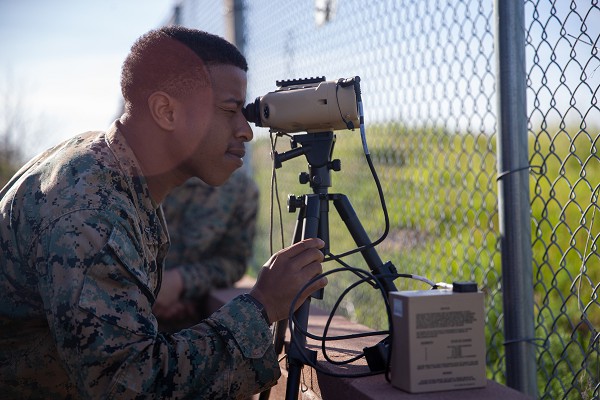
Camp Pendleton, California. (March 8, 2023): In this photo by Corporal Trent Holton, a transmissions system operator with the 9th Communications Battalion, 1st Marine Expeditionary Force Information Group, uses a laser range finder-integrated capability system during ANGLICO Base Course (ABC). Marines undergo six weeks of intensive training, divided into three phases, to become combat ready “Anglicans.”
For today’s Marines, gone are the bulky backpack radios that weighed troops down in the jungles of Viet Nam. Today, Marine Transmissions System Operators maintain the military’s signature communications tool, the Very Small Aperture Terminal-Expeditionary vehicular or man pack radio set. The TSO fields and maintains these powerful, lightweight radio sets with their antennas and power sources. In combat, a TSO establishes contact with distant stations, processes and logs messages, and conducts frequency changes or cryptographic codes in real time. TSOs train to use highly specialized hardware/software programs to establish communications networks anywhere in the world.
The ABC Course expands these student’s grasp of transportation, communications, and call-for-fire missions. Students learn how to coordinate fire support, conduct field radio operations, and how to direct air support. They also receive training in airborne operations, insertion methods, fieldcraft, and other infantry skills.
Phase one consists of classroom work followed by hands-on practice in calling for fire, close-air support, patrolling, and basic radio communications. The final phase involves helicopter insertions and live fire exercises. Exposing technical types, like TSOs, to a wider range of combat field training expands their skills and equates to more well-rounded Marines in the future.


